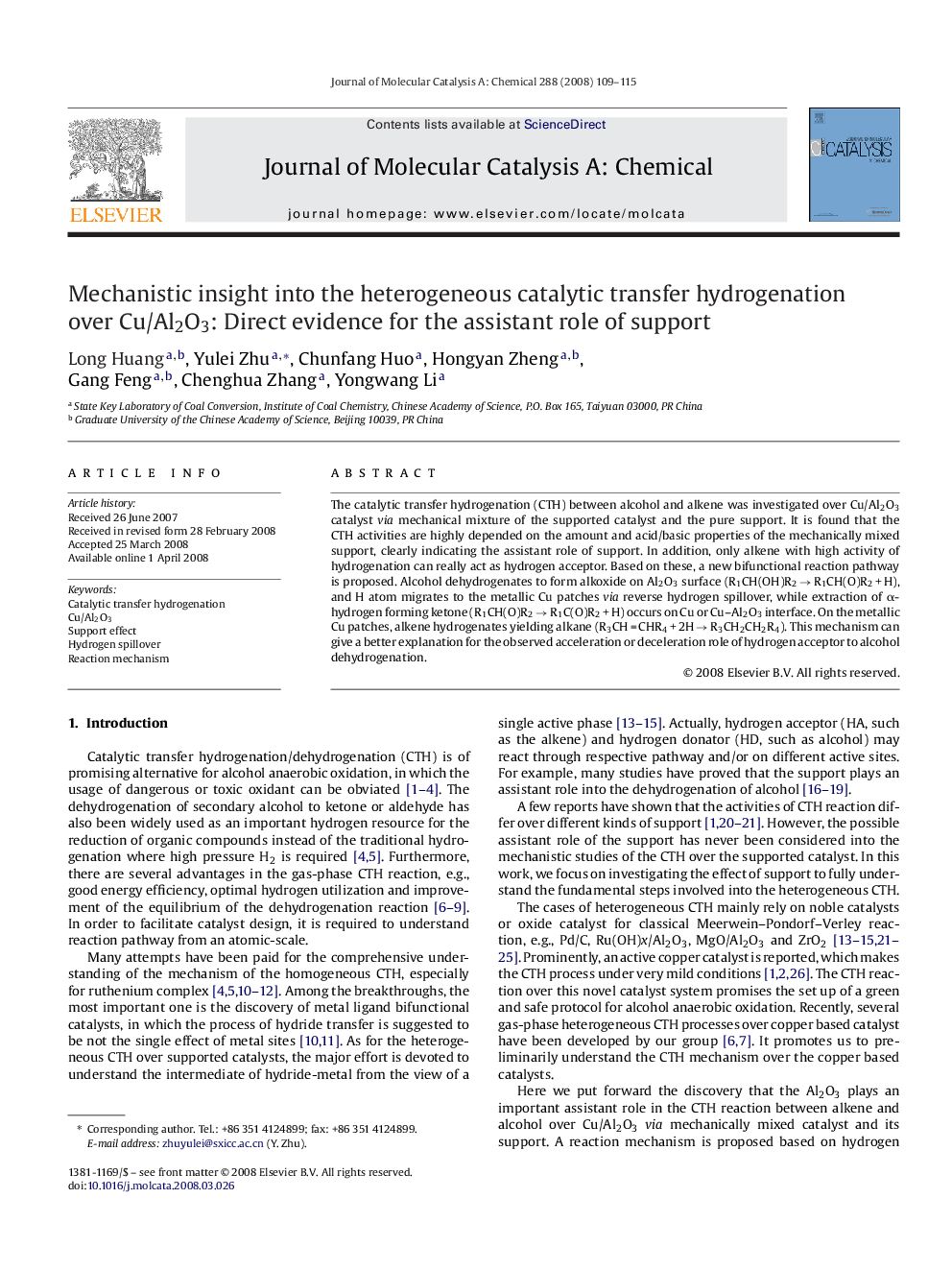| Article ID | Journal | Published Year | Pages | File Type |
|---|---|---|---|---|
| 67281 | Journal of Molecular Catalysis A: Chemical | 2008 | 7 Pages |
The catalytic transfer hydrogenation (CTH) between alcohol and alkene was investigated over Cu/Al2O3 catalyst via mechanical mixture of the supported catalyst and the pure support. It is found that the CTH activities are highly depended on the amount and acid/basic properties of the mechanically mixed support, clearly indicating the assistant role of support. In addition, only alkene with high activity of hydrogenation can really act as hydrogen acceptor. Based on these, a new bifunctional reaction pathway is proposed. Alcohol dehydrogenates to form alkoxide on Al2O3 surface (R1CH(OH)R2 → R1CH(O)R2 + H), and H atom migrates to the metallic Cu patches via reverse hydrogen spillover, while extraction of α-hydrogen forming ketone (R1CH(O)R2 → R1C(O)R2 + H) occurs on Cu or Cu–Al2O3 interface. On the metallic Cu patches, alkene hydrogenates yielding alkane (R3CH = CHR4 + 2H → R3CH2CH2R4). This mechanism can give a better explanation for the observed acceleration or deceleration role of hydrogen acceptor to alcohol dehydrogenation.
Graphical abstractBy the means of mechanical mixture of supported catalyst and its pure support, the support is demonstrated to play a remarkable assistant role in heterogeneous catalytic transfer hydrogenation between alkene and alcohol over Cu/Al2O3. The reaction results strongly suggest a bifunctional mechanism as follows: (Step 1) alcohols absorption, (Step 2) alcohols dehydrogenation with cooperation of Al2O3 and Cu, (Step 3) reverse hydrogen spillover from Al2O3 surface to metal phase, (Step 4) the alkene hydrogenation on metal phase.Figure optionsDownload full-size imageDownload as PowerPoint slide
